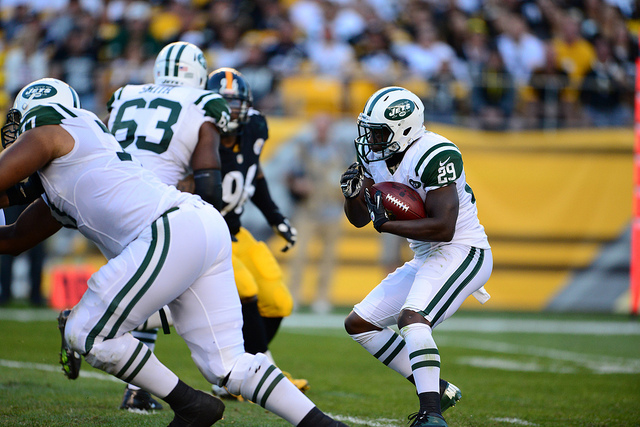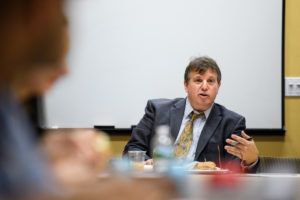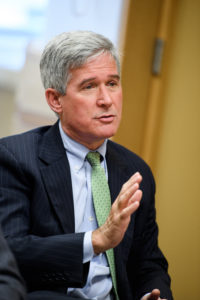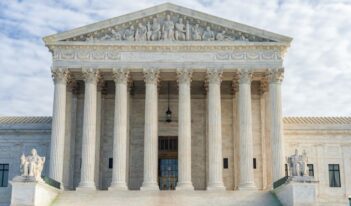
Experts discuss multiple avenues OSHA could undertake to protect NFL players.
We may think of professional football players as celebrities—especially after the pageantry of last week’s Super Bowl. But would these athletes actually be safer if they were treated more like construction workers, who are protected by federal regulations? Or would taking the National Football League (NFL) to court force its managers to confront the cranial trauma many professional players endure?
During a seminar hosted by the Penn Program on Regulation last fall, Adam Finkel, a former regulatory director and regional administrator for the Occupational Safety and Health Administration (OSHA) and currently a Penn Law faculty member as well as the Executive Director of PPR, presented various approaches that OSHA could undertake to protect NFL players. David Langfitt, a Philadelphia-based attorney who represents 1,400 NFL players in concussion-related litigation, discussed how the courts could change the game.

Adam Finkel speaks at the seminar hosted by the Penn Program on Regulation.
Before turning to the role of law, Finkel offered the attendees some medical context. Many football players endure repeated, intense blows to the head while playing football. Some of these impacts, Finkel noted, cause concussions, while others are “sub-concussive” but can injure the brain nevertheless. Because sustained impacts can damage neural proteins and cause them to clump together in “neurofibrillary tangles,” the brain bruises often take a particular pattern. Those tangles have been diagnosed as the hallmark of what medical professionals now call chronic traumatic encephalopathy (CTE), a condition referred to as punch-drunk syndrome in years past. Finkel explained that although a diagnosis of CTE at the cellular level diagnosis is possible only post-mortem, the condition has already been confirmed in nearly 100 former NFL players during autopsy.
As they age, former NFL players suffering from CTE often exhibit mood and behavioral disorders, possibly followed by a severe loss of cognitive ability later on. According to Langfitt, some players’ wives have described their husbands’ minds as simply “gone.” The speakers emphasized the epidemiology associating the incidence of CTE to contact sports including football. Finkel cited a study by the Mayo Clinic in Florida that uncovered CTE in nearly one-third of 66 autopsied former players of contact sports; a matched control group nearly three times the size of individuals without a history of playing contact sports yielded zero occurrences of CTE. Studies by researchers at Boston University show similarly strong connections between CTE and years spent on the field.

David Langfitt delivers remarks.
Such findings easily constitute an occupational risk using OSHA’s traditional metrics, Finkel pointed out. OSHA officials respond to “disease clusters” surrounding a particular occupation. When seven workers became infertile in the presence of a pesticide known as DBCP in the late 1970s, for example, the agency intervened quickly and decisively. And a 1980 Supreme Court decision that required OSHA to quantify hazards prompted OSHA to define a lifetime probability of one chance per thousand as “the uppermost end of a million-fold range suggested by the [Supreme] Court, somewhere below which the boundary of acceptable versus unacceptable risk must fall.” Under either precedent, Finkel argued, the results of the Mayo Clinic study should merit bringing football players—and others who experience repeated head trauma on the job including loggers and commercial drivers—under OSHA’s purview.
Employers bear dual responsibilities under the Occupational Safety and Health Act of 1970, Finkel noted: they must comply with specific standards for working conditions as well as fulfill a general duty to ensure that employees do not suffer “material impairment of health or functional capacity” as a result of their work. He went on to explain that the continuum of potential OSHA involvement in NFL head injury matters ranges from removed observer to involved enforcer. For example, on the less invasive end of the spectrum, OSHA could disclose information about CTE and concussion risks to current and aspiring players, Finkel theorized.
Another option for increasing the protection provided to NFL players, Finkel proffered, would be the development of a partnership between OSHA and the NFL for purposes of developing a health and safety code of practice; OSHA would then have the authority to independently enforce this partnership, he suggested. Alternatively, OSHA officials could serve in a monitoring-only role, for example, requiring teams to use helmet sensors and managing players’ return to the field based on their exposures. The deepest form of involvement would come in the form of a specific law written by Congress or safety standard penned by OSHA, Finkel concluded, though he described such solutions as unlikely given the political climate and OSHA’s history of reluctance to tread into highly controversial areas.
 In using litigation as a tool to improve players’ safety, Langfitt explained that one job of plaintiffs’ attorneys in these cases includes forcing the disclosure of “more and more” information. By way of illustration, Langfitt explained that he had served as a leading plaintiffs’ attorney in a class action lawsuit—commonly referred to as NFL Players’ Concussion Injury Litigation—which had been brought by more than 4,500 former NFL players against the League, for brain injuries that they alleged resulted from head trauma sustained during their football careers. The players and NFL have since entered into a settlement agreement. Qualifying players will begin to receive compensation as early as May or June of this year. Langfitt characterized cases like this as a regulatory “backstop” that helpfully shine a “spotlight” on the deepening safety concerns. Langfitt hopes that targeting the coffers of the League and team owners will help jolt them into making meaningful safety improvements for current and future players.
In using litigation as a tool to improve players’ safety, Langfitt explained that one job of plaintiffs’ attorneys in these cases includes forcing the disclosure of “more and more” information. By way of illustration, Langfitt explained that he had served as a leading plaintiffs’ attorney in a class action lawsuit—commonly referred to as NFL Players’ Concussion Injury Litigation—which had been brought by more than 4,500 former NFL players against the League, for brain injuries that they alleged resulted from head trauma sustained during their football careers. The players and NFL have since entered into a settlement agreement. Qualifying players will begin to receive compensation as early as May or June of this year. Langfitt characterized cases like this as a regulatory “backstop” that helpfully shine a “spotlight” on the deepening safety concerns. Langfitt hopes that targeting the coffers of the League and team owners will help jolt them into making meaningful safety improvements for current and future players.
Finkel and Langfitt both expressed some dismay about the League’s response to CTE evidence. Recalling the arguments made by tobacco companies that evidence of lung cancer among smokers was merely “anecdotal,” Finkel noted NFL leaders continue to emphasize the individual nature of each case rather than acknowledge a systemic problem. The existence of a few players who were found with CTE but were asymptomatic during life, and a few others who had symptoms but did not have CTE lesions, in no way casts general doubt on the association between repeated head trauma and the risk of debilitating consequences, Finkel emphasized. Langfitt similarly characterized the League’s response as a “classic case of willful blindness.”
Langfitt concluded, however, with a different picture. He predicted that football’s player pipeline will dry up as people opt to play less harmful sports and that the NFL will follow the path of boxing—that is, it will decline in popularity and become a “pay-per-view sport within 25 years.”



